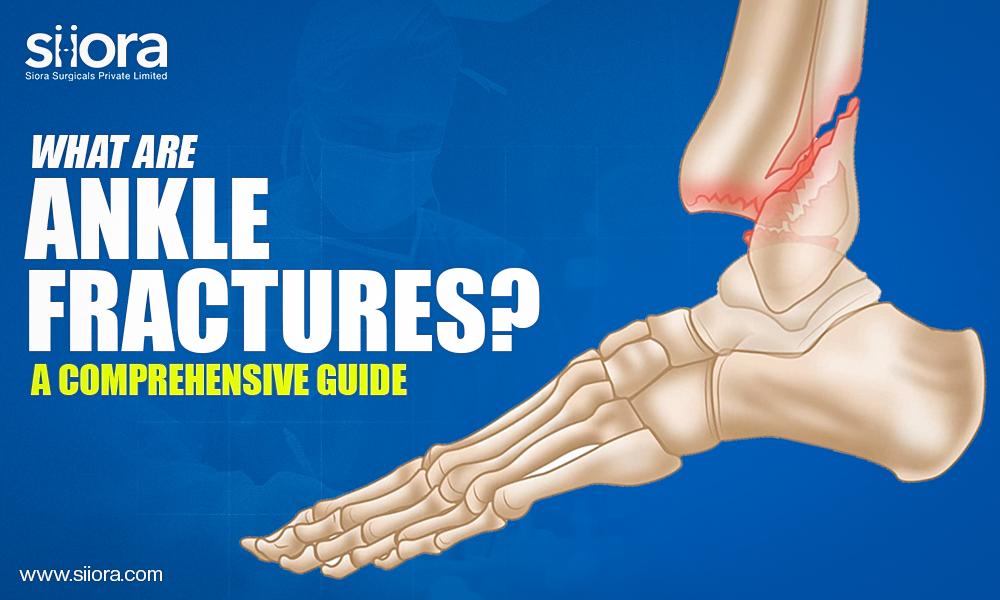The ankle is one of the most important joints in our body, helping us walk, run, jump, and balance. Unfortunately, it is also vulnerable to injuries, particularly fractures. An ankle fracture can be a painful and limiting condition, affecting daily activities and overall quality of life. Severe cases may demand reduction using ankle plates and screws. Whether caused by sports, accidents, or a simple misstep, understanding ankle fractures can help in recognizing symptoms early and seeking proper treatment. This guide will take you through what ankle fractures are, their causes, types, symptoms, and available treatment options.
What Is an Ankle Fracture?
An ankle fracture, as the name suggests, is a condition characterized by a break in one of the bones in the ankle joint. The ankle joint consists of three main bones: the tibia (shinbone), fibula (the smaller bone of the lower leg), and talus (the bone that sits between the heel and tibia/fibula). These bones are held together by strong ligaments, which also play a role in stabilizing the joint. A fracture can affect any of these bones, sometimes involving multiple breaks.
Ankle fractures vary in severity. Some may be simple cracks in the bone, while others involve multiple fractures and ligament injuries. The complexity of the fracture often determines the treatment approach and recovery time.
What Are the Causes of Ankle Fractures?
Ankle fractures can happen to anyone, but they are more common among athletes and older adults with weaker bones. Some common causes include:
- Sports injuries – Activities like football, basketball, or running can put significant stress on the ankle.
- Twisting injuries – A sudden twist or roll of the ankle while walking on uneven surfaces or wearing improper footwear.
- Falls and accidents – Slipping on wet surfaces or falling from a height.
- High-impact trauma – Motor vehicle accidents or direct blows to the ankle.
In some cases, underlying conditions like osteoporosis may make the bones more prone to fractures.
What Are the Types of Ankle Fractures?
Doctors classify ankle fractures based on the location and extent of the break:
- Lateral malleolus fracture – A break in the fibula (outside part of the ankle).
- Medial malleolus fracture – A break in the tibia (inside part of the ankle).
- Bimalleolar fracture – Involves both the tibia and fibula.
- Trimalleolar fracture – Involves three parts: tibia, fibula, and the back of the tibia.
- Compound (open) fracture – When the bone pierces the skin, increasing the risk of infection.
What Are the Symptoms of an Ankle Fracture?
Recognizing an ankle fracture early can prevent complications. Common symptoms include:
- Severe pain and tenderness around the ankle
- Swelling and bruising
- Difficulty or inability to bear weight
- Visible deformity in severe cases
- A cracking or popping sound at the time of injury
How to Diagnose Ankle Fractures?
A doctor typically performs a physical examination followed by imaging tests like X-rays or CT scans to determine the type and extent of the fracture.
What Treatment Options Are Available for Ankle Fractures?
Treatment depends on the severity of the fracture:
Non-surgical treatment
For minor fractures, a cast, splint, or walking boot may be used to keep the ankle stable while it heals.
Surgical treatment
Severe fractures may require internal fixation using ankle plates, screws, or rods to stabilize the bones.
Rehabilitation is a crucial part of recovery. Physical therapy helps restore movement, strength, and balance, ensuring a safe return to daily activities.
Recovery and Prevention
Recovery time varies from person to person, usually taking anywhere from six weeks to several months. Following the doctor’s advice, attending physical therapy sessions, and avoiding high-impact activities during recovery are essential for proper healing.
To prevent ankle fractures, wearing supportive footwear, maintaining bone health through a balanced diet and exercise, and practicing caution during sports or physical activities can make a significant difference.
Final Thoughts
Ankle fractures can be challenging, but with timely diagnosis and proper treatment, most people regain full function. If you experience ankle pain or suspect a fracture, seek medical attention immediately. Early treatment not only speeds up recovery but also reduces the risk of long-term complications.
Siora Surgicals Pvt. Ltd. is a leading manufacturer and supplier of a world-class range of trauma implants and instruments, including the ankle plating system, in India. With presence in over 50 countries, the company is also looking to establish itself among the top orthopedic devices companies in Lebanon.

